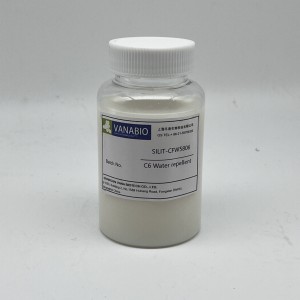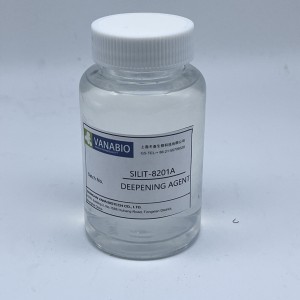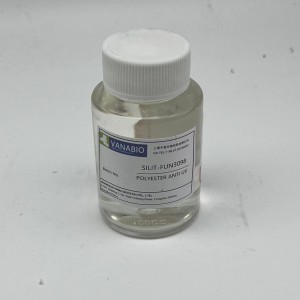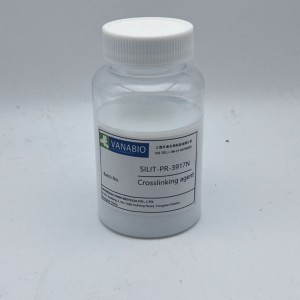Amino silicone emulsion
Amino silicone emulsion has been widely used in the textile industry. The silicone finishing agent used in the textile industry is mainly amino silicone emulsion, such as dimethyl silicone emulsion, hydrogen silicone emulsion, hydroxyl silicone emulsion, etc.
So, in general, what are the choices of amino silicone for different fabrics? Or, what kind of amino silicone should we use to sort different fibers and fabrics to achieve good results?

● Pure cotton and blended products, mainly with a soft touch, can choose amino silicone with an ammonia value of 0.6;
● Pure polyester fabric, with a smooth hand feel as the main feature, can choose amino silicone with an ammonia value of 0.3;
● Real silk fabrics are mainly smooth to the touch and require high gloss. Amino silicone with a 0.3 ammonia value is mainly selected as a compound smoothing agent to increase gloss;
● Wool and its blended fabrics require a soft, smooth, elastic and comprehensive hand feel, with little color change. Amino silicone with 0.6 and 0.3 ammonia values can be selected for compounding and compounding smoothing agents to increase elasticity and gloss;
● Cashmere sweaters and cashmere fabrics have a higher overall hand feel compared to wool fabrics, and high concentration compound products can be selected;
● Nylon socks, with a smooth touch as the main feature, choose high elasticity amino silicone ;
● Acrylic blankets, acrylic fibers, and their blended fabrics are mainly soft and require high elasticity. Amino silicone oil with an ammonia value of 0.6 can be selected to meet the requirements of elasticity;
● Hemp fabrics, mainly smooth, mainly choose amino silicone with an ammonia value of 0.3;
● Artificial silk and cotton are mainly soft to the touch, and amino silicone with an ammonia value of 0.6 should be selected;
● Polyester reduced fabric, mainly to improve its hydrophilicity, can choose polyether modified silicone and hydrophilic amino silicone, etc.
1.Characteristics of amino silicone
Amino silicone has four important parameters: ammonia value, viscosity, reactivity, and particle size. These four parameters basically reflect the quality of amino silicone and greatly affect the style of the processed fabric. Such as hand feel, whiteness, color, and ease of emulsification of silicone .
① Ammonia value
Amino silicone endows fabrics with various properties such as softness, smoothness, and fullness, mostly due to the amino groups in the polymer. The amino content can be represented by the ammonia value, which refers to the milliliters of hydrochloric acid with an equivalent concentration required to neutralize 1g of amino silicone . Therefore, the ammonia value is directly proportional to the mole percentage of amino content in silicone oil. The higher the amino content, the higher the ammonia value, and the softer and smoother the texture of the finished fabric. This is because the increase in amino functional groups greatly increases their affinity for the fabric, forming a more regular molecular arrangement and giving the fabric a soft and smooth texture.
However, the active hydrogen in the amino group is prone to oxidation to form chromophores, causing yellowing or slight yellowing of the fabric. In the case of the same amino group, it is evident that as the amino content (or ammonia value) increases, the probability of oxidation increases and yellowing becomes severe. With the increase of ammonia value, the polarity of amino silicone molecule increases, which provides a favorable prerequisite for the emulsification of amino silicone oil and can be made into micro emulsion. The selection of emulsifier and the size and distribution of particle size in emulsion are also related to the ammonia value.

① Viscosity
Viscosity is related to the molecular weight and molecular weight distribution of polymers. Generally speaking, the higher the viscosity is, the greater the molecular weight of amino silicone is, the better the film-forming property on the surface of the fabric is, the softer the feel is, and the smoother the smoothness is, but the worse the permeability is. Especially for tightly twisted fabrics and fine denier fabrics, amino silicone is difficult to penetrate into the fiber interior, affecting the fabric performance. Too high the viscosity will also make the stability of emulsion worse or difficult to make micro emulsion. Generally, product performance cannot be adjusted solely by viscosity, but is often balanced by ammonia value and viscosity. Usually, low ammonia values require high viscosity to balance the softness of the fabric.
Therefore, a smooth hand feel requires high viscosity amino modified silicone . However, during the soft processing and baking, some amino silicone cross-link to form a film, thereby increasing the molecular weight. Therefore, the initial molecular weight of amino silicone is different from the molecular weight of the amino silicone that ultimately forms a film on the fabric. As a result, the smoothness of the final product can vary greatly when the same amino silicone is processed under different process conditions. On the other hand, low viscosity amino silicone can also improve the texture of fabrics by adding cross-linking agents or adjusting the baking temperature. Low viscosity amino silicone increases permeability, and through cross-linking agents and process optimization, the advantages of high and low viscosity amino silicone can be combined. The viscosity range of typical amino silicone is between 150 and 5000 centipoise.
However, it is worth noting that the distribution of molecular weight of amino silicone may have a greater impact on product performance. The low molecular weight penetrates into the fiber, while the high molecular weight is distributed on the outer surface of the fiber, so that the inside and outside of the fiber are wrapped by amino silicone, giving the fabric a soft and smooth feeling, but the problem may be that the stability of the micro emulsion will be affected if the molecular weight difference is too large.

① Reactivity
Reactive amino silicone can generate self cross-linking during finishing, and increasing the degree of cross-linking will increase the smoothness, softness, and fullness of the fabric, especially in terms of elasticity improvement. Of course, when using cross-linking agents or increasing baking conditions, general amino silicone can also increase cross-linking degree and thus improve rebound. Amino silicone with hydroxyl or methylamino end, the higher the ammonia value, the better its cross-linking degree, and the better its elasticity.
②Particle size of micro emulsion and electric charge of emulsion
The particle size of amino silicone emulsion is small, generally less than 0.15 μ, so the emulsion is in a thermodynamic stable dispersion state. Its storage stability, heat stability and shear stability are excellent, and it generally does not break the emulsion. At the same time, the small particle size increases the surface area of the particles, greatly improving the contact probability between amino silicone and fabric. The surface adsorption capacity increases and the uniformity improves, and the permeability improves. Therefore, it is easy to form a continuous film, which improves the softness, smoothness, and fullness of the fabric, especially for fine denier fabrics. However, if the particle size distribution of amino silicone is uneven, the stability of emulsion will be greatly affected.
The charge of amino silicone micro emulsion depends on the emulsifier. In general, anionic fibers are easy to adsorb cationic amino silicone, thereby improving the treatment effect. The adsorption of anionic emulsion is not easy, and the adsorption capacity and uniformity of non-ionic emulsion are better than anionic emulsion. If the negative charge of the fiber is small, the influence on the different charge properties of the micro emulsion will be greatly reduced. Therefore, chemical fibers such as polyester absorb various micro emulsion with different charges and their uniformity are better than cotton fibers.

1.The influence of amino silicone and different properties on the hand-feel of fabrics
① Softness
Although the characteristic of amino silicone is greatly improved by the binding of amino functional groups to fabrics, and the orderly arrangement of silicone to give fabrics a soft and smooth feel. However, the actual finishing effect largely depends on the nature, quantity, and distribution of amino functional groups in amino silicone . At the same time, the formula of emulsion and the average particle size of emulsion also affect the soft feel. If the above influencing factors can achieve an ideal balance, the soft style of fabric finishing will reach its optimum, which is called "super soft". The ammonia value of general amino silicone softeners is mostly between 0.3 and 0.6. The higher the ammonia value, the more evenly distributed the amino functional groups in the silicone , and the softer the fabric feel. However, when the ammonia value is greater than 0.6, the softness feel of the fabric does not significantly increase. In addition, the smaller the particle size of emulsion, the more conducive to the adhesion of emulsion and the soft feel.
② Smooth hand feel
Because the surface tension of silicone compound is very small, amino silicone micro emulsion is very easy to spread on the fiber surface, forming a good smooth feel. Generally speaking, the smaller the ammonia value and the larger the molecular weight of amino silicone , the better the smoothness. In addition, amino terminated silicone can form a very neat directional arrangement due to all the silicon atoms in the chain links being connected to the methyl group, resulting in excellent smooth hand feel.










